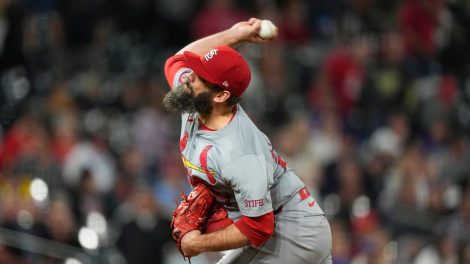The Toronto Blue Jays’ first draft under new general manager Ross Atkins is less than a month away and intrigue is building about how the club’s approach to selecting players shifts under the revamped front office.
A scouting department with a strong track record during former GM Alex Anthopoulos’s six-year reign survived the off-season largely intact, although with a new chain of command things are clearly going to be different for amateur scouting director Brian Parker.
To that end, the Blue Jays recently ran a six-round mock draft both as a way to develop their draft board and identify gaps in information, but also, as Atkins puts it, “to learn one another, our styles and what we’re accustomed to, what we’re not accustomed to.”
“What we’re trying to do is maximize what was good by adding what (director of baseball operations) Mike Murov, (director of player development) Gil Kim and myself and Mark (Shapiro, the team president and CEO) have learned in other organizations,” says Atkins. “(Assistant GM) Tony LaCava hasn’t been as involved in the draft in the last few years, now he’ll be much more involved, so we really are trying to use all our resources. High performance, the mental side, strength and conditioning, sports science, what can we learn about these players that we feel will not only be indicative of future success, but help them transition into our organization better should we take them.”
How successfully the old and new meld may very well dictate whether or not the Blue Jays are successful in the June 9–11 draft. Every draft is important, but this year is particularly significant given the way Anthopoulos thinned out the system during last summer’s trade deadline spree.
With the 21st, 57th (as compensation for not signing Brady Singer) and 66th picks, there’s an opportunity to replenish the organization and a signing bonus pool of $6,603,300 gives the Blue Jays the option of shifting the money around should someone unexpectedly drop.
Both assistant GM Andrew Tinnish, when he was scouting director, and Parker have employed such a strategy in the past, although an argument can be made that spreading the wealth may be the wiser play given all the lost inventory.
“If there are opportunities to maximize every single dollar you have, no question that we will be looking to do that,” says Atkins. “The bulk of our time will be spent on learning what makes a player, what motivates a player, what drives a player, ultimately how important baseball is to them, and how well they’re going to fit into our culture and environment. Where there are opportunities to create more of that for our system, we’ll always look to do that.”
Another thing to watch for is whether the Blue Jays move off their prioritization of starting pitching and premium position players early in the draft. In the six drafts under Anthopoulos, the Blue Jays used their eight first-round picks to select six pitchers, a centre-fielder and a catcher. Pitchers were the overwhelming preference in the subsequent rounds, as well, since Anthopoulos viewed them as the toughest commodity to obtain at the big-league level and coveted assets for potential trades.
Asked about his general philosophies, Atkins says, “Really, we try to value what history tells us, and try to connect the dots backwards to determine what has worked in the past, what has been indicative of future success and how do we create the most value in this draft. So it’s not position specific, it’s not need specific, it’s value and based on history.”
Atkins is coy about what history says, but it’s likely that the Blue Jays, like most other clubs, will do some sort of draft modelling to track what type of players from which developmental streams most typically succeed.
“We’re trying to learn where there are opportunities and where our collective experiences tell us things are going to be indicative of future success about certain players,” is how Atkins explains it. “Much less driven by stats, and more driven by insight, people’s experiences, past occurrences and things that have occurred in the draft previously.”
The Blue Jays have also taken more risks in the draft, often leaning toward high school players with big upside. A factor to consider this year is that the club’s prospect base is in the lower-levels of the farm system and with a gap at the upper levels, drafting some college players, who tend to advance quicker, might make some sense as a way to balance the organization.
Still, Atkins is adamant that urgency won’t be a factor in the draft, and that decisions will be made based on who the team feels is the best player available, regardless of other factors.
That may also lead the Blue Jays to lock in on players at premium positions.
“Overall that’s generally a good philosophy because middle of the diamond typically signifies athleticism and it’s easier to move off the middle than it is to the middle,” says Atkins. “But there are so many pieces to the equation. It could be a college right-fielder who is an incredible bat, Kyle Schwarber (of the Cubs) would be a great example, that I don’t think the entire industry was confident that he was going to be a catcher, but people were buying on the bat. So there are exceptions to every philosophy, and the most important thing to do is not paint yourself into a box and make sure you’re getting everything out of the best resources available to understand more about players.”
The Blue Jays’ period of learning will soon be over, with a test that can significantly impact the organization looming.








